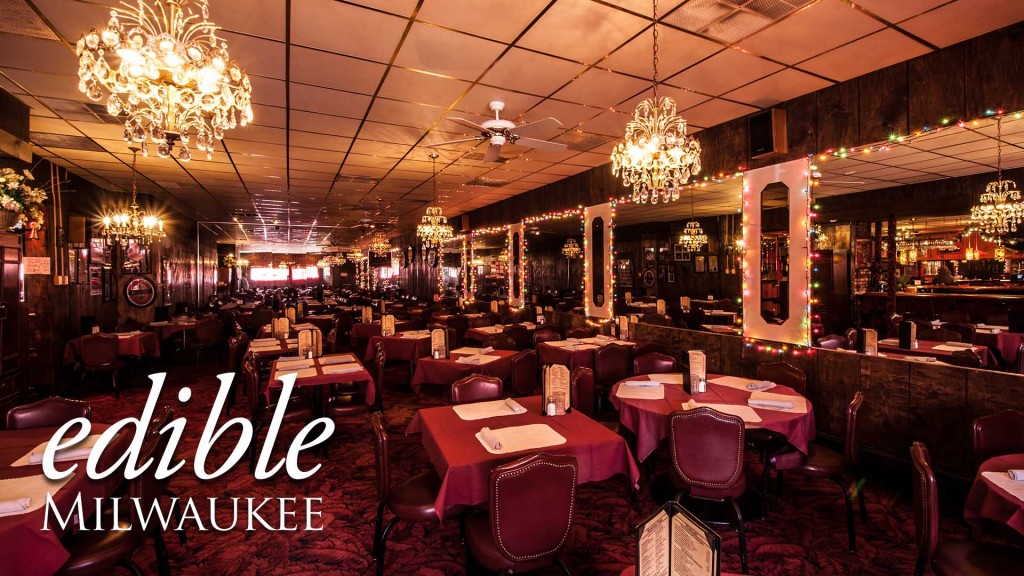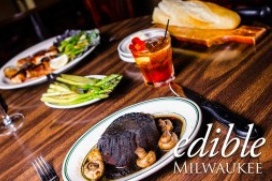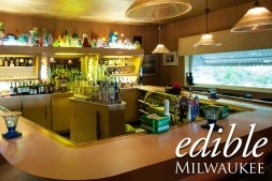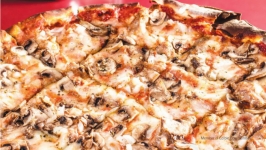Wisconsin Supper Clubs
Heritage Made Visible (and Edible)
For many Wisconsinites, the supper club is such a part of life that it’s easy to forget—or even realize—that it has little meaning outside state lines. Filmmaker Holly De Ruyter never gave her local supper club, Colonial House in Freedom, a second thought while growing up outside Green Bay. Then she went to college in Chicago.
“I didn’t think it would be that different, but I was shocked at the cultural differences,” she says. “People in Chicago don’t eat at supper clubs or even know what they are! This place that was such a regular part of my family’s life.”
Supper clubs are about as Wisconsin as it gets. Part dining destination and part community center, the supper club with its rituals of relish trays, salads, potatoes, bread or crackers, and steak is part of the state’s collective culture and history. It’s a heritage made visible, as many supper clubs have changed little since they opened. In recent years, as many restaurants add classic cocktails and nostalgic recipes to the menu, supper clubs haven’t had to jump on the bandwagon—they never left it.
De Ruyter’s culture shock became the root of her 2015 documentary, “Old Fashioned: The Story of the Wisconsin Supper Club,” a genuine and funny look at the history and people behind these unique institutions.
Despite their ubiquity, supper clubs lack a precise definition, in part because there are restaurants called supper clubs with different meanings in other parts of the world. Some supper clubs in the American South are real, members-only clubs that serve alcohol in dry counties, while the Amsterdam-born international chain supper club is a restaurant, bar and nightclub where food is enjoyed in oversized white beds.
While the term implies exclusivity, the Wisconsin version of the supper club is anything but. It’s a name that often misleads out-of-staters looking for a membership. Most supper clubs are family-run with mom, dad, grandma and grandkids cooking, serving and greeting patrons alongside longtime employees. Most have a separate bar and dining room, a surf and turf menu, and are only open for dinner.
“Every one is really unique to the owner so they are hard to define,” says De Ruyter, who visited more than fifty supper clubs in the course of making her film. “You really just know one when you see one.”
Or maybe it’s something we’re born with: “We native Wisconsinites are just born with a deep understanding of the meaning of ‘supper club,’ just as we know that cows sleep lying down, so you can’t actually tip them over,” proclaimed a June 27, 1999 editorial in the Wisconsin State Journal.
Many attribute the advent of the supper club to Milwaukee native Lawrence Frank. He opened Lawry’s The Prime Rib in Beverly Hills, California, in 1938. Frank’s restaurant featured prime rib, potatoes, Yorkshire pudding, and a green salad prepared tableside.
It’s not clear how Lawry’s earned the distinction of supper club progenitor, especially since other supper clubs, including the Turk’s Inn in Hayward, the Greenwood Supper Club in Fish Creek, Indianhead Supper Club in Balsam Lake, and the Red Mill Supper Club in Stevens Point were open and serving steaks in the 1930s as well. No matter who invented them, supper clubs took off in Wisconsin in the 1930s and 1940s.
These restaurants worked in Wisconsin for several reasons. Supper clubs went hand-in-hand with automobile culture. Wisconsin had thousands of miles of paved roads because farmers needed to get their milk to market, so supper clubs became destinations for weekend drives on major highways and in rural areas. Knowing their customers were arriving by car, supper club owners used flashy or kitschy architecture and later neon lights to catch people’s eyes as they drove by.
Wisconsinites already had a tradition of going out to the country to drink. During Prohibition, roadhouses provided a place for people to imbibe outside the eye of the law. Many of these roadhouses evolved into dance halls and then supper clubs with the end of Prohibition.
The ethnic diversity of the state also encouraged the growth of supper clubs. The European notion of bars as family places were reflected in supper clubs where whole families could dine and drink together. That included respectable women who had not been welcome in bars before Prohibition. Not really a bar but a restaurant with a bar attached, supper clubs broke down barriers for women to go out.
In their heyday, from the 1940s to the 1970s, Wisconsin likely boasted thousands of supper clubs, most in resort areas or rural communities. Only 300 or so remain.
Milwaukee’s Five O’Clock Steakhouse is the city’s oldest steakhouse. The Coerper family opened the supper club in 1948. Its dim lighting and wood paneling instantly take diners back to the 1950s. Even though the family sold it to new owners a few years ago, the restaurant, and most importantly the giant steaks, has stayed largely the same. But that doesn’t mean that they are stuck in time. Owner Stelio Kalkounos renovated the supper club’s second floor to attract new customers, including businesses needing meeting space, and retooled the menu to add dishes for changing tastes.
They aren’t the only ones. Many supper clubs have added Wisconsin craft beers and options for vegetarian and gluten-free diners. Others source produce and meat locally.
Despite the seemingly old-fashioned feel of supper clubs, in recent years, a few new restaurants have taken on reinventing the Wisconsin supper club. Milwaukee’s Bartolotta Restaurant group opened Joey Gerard’s in Greendale and in Mequon in 2012. Co-owner Joe Bartolotta grew up going to supper clubs in Wauwatosa and Milwaukee.
“I have fond memories of going out to eat with my parents, and when the relish tray would come out, I’d stick the black olives on the tips of my fingers,” says Bartolotta.
These memories and his desire to open an approachable restaurant in the suburbs led to Joey Gerard’s (Gerard is Bartolotta’s middle name). Wisconsin tradition and Lawrence Frank’s Beverly Hills club inspired the decor and menu.
“To us in Wisconsin, supper clubs mean wood paneling and animal heads on the wall, but we wanted ours to be reminiscent of those old Hollywood-style supper clubs,” explains Bartolotta.
Joey Gerard’s does have one animal, though. Bartolotta installed a moose head that hung for decades in a northern Wisconsin bar in his modern supper club.
Another supper club, the Jackson Grill, opened in Milwaukee’s Burnham Park neighborhood in 2002. It’s owned and operated by Chef Jimmy Jackson and his wife Heidi Schmidt, who work side-byside with their employees and know many of their guests by name.
“We found this property with retro supper club feel,” says Schmidt. “It’s what we always wanted: something small, casual and comfortable.”
Jackson and Schmidt grow some of their own produce and visit the West Allis Farmers’ Market regularly. Like many supper clubs, everything at the Jackson Grill is homemade.
Jackson began his cooking career at his father’s legendary steakhouse, Ray Jackson’s, which drew athletes and celebrities like Vince Lombardi and Warren Spahn. With Miller Park so close, the Jackson Grill draws its own sports fans and celebrities, including former baseball commissioner Bud Selig.
“Everyone is welcome here,” says Schmidt. “This isn’t a place to be seen but a place to have a nice meal.”
Consistency, community and a loyal clientele are the foundations of the supper club’s operation. People go back to these places again and again, not for the latest food trend but for comfort and familiarity.
Among supper club owners and patrons, there’s an urgency to keep them going. Many supper clubs have shut down as family members move on and as chain restaurants enter small communities. Ray Radigan’s near Kenosha, one of the oldest supper clubs in the state, shut its doors in May 2015 after 82 years in business.
“The competition from our ‘dine-and-dash’ culture is killing supper clubs,” says De Ruyter. “Those in more urban areas, in particular, like Milwaukee are gone.”
Supper clubs also tend not to advertise or to have a digital presence. You need a map—a real paper map to find them—or the advice of a local.
“We’re a destination,” says Schmidt of the Jackson Grill. “We’re not on a main thoroughfare. You have to know where we are to find us and we’re very fortunate that so many people do.”
Supper clubs may be in danger but they are unlikely to go extinct. Rooted in place, supper clubs are home for many Wisconsinites.
“Supper clubs embody Wisconsin culture,” says De Ruyter. “They make you feel special. You can’t get that feeling everywhere.”











